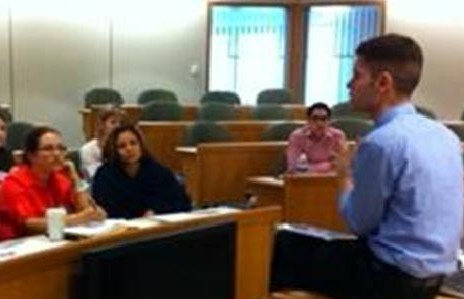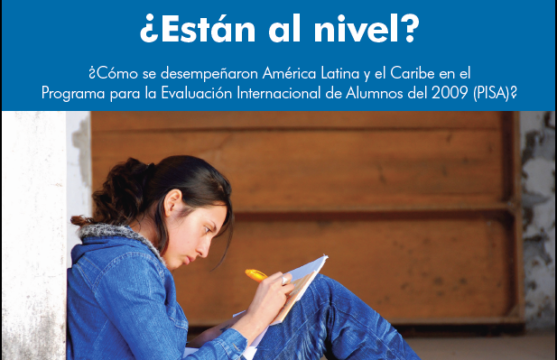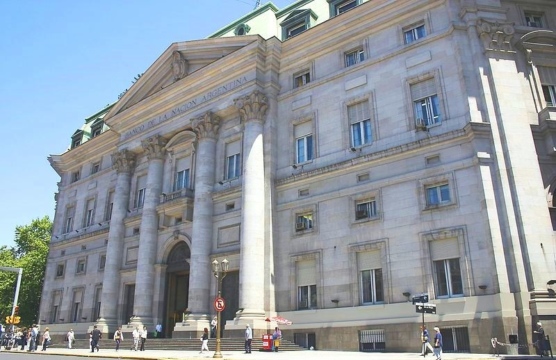
PREAL Hosts Study Tour for Young Leaders in Boston
Study tour aims to expose participants to innovations and encourage them to apply lessons learned in their own countries.
This post is also available in: Spanish
To mark the publication of a report on the poor quality of education in Argentina, Ariel Fiszbein (Director of the Education Program at the Inter-American Dialogue) interviewed Manuel A. Alvarez Trongé (President of Proyecto Educar 2050) and Alejandro J. Ganimian (author of the report).
AF: Proyecto Educar 2050 recently published a report called “Pistas para mejorar” (Clues for Improving). Can you briefly describe the analysis you carried out and what you found?
AJG: The analysis is a follow-up to our first report, “No logramos mejorar” (We Did Not Improve)” which summarizes Argentina’s performance on the 2012 Programme for International Student Assessment (PISA). In “Pistas para mejorar,” we seek to answer the question, “What did the countries, schools, and students who performed best on PISA do differently?” This analysis led us to explore first, how specific inputs and key processes in Argentina compare with those in the other countries that participated in PISA, and second, how these inputs and processes are related to performance on PISA.
We found that Argentina is very different from the rest of the countries that participated in PISA in several key areas, including: teacher salaries are among the lowest, the school year is shorter, there are more students per class, many schools have problems with infrastructure and financial resources, there are fewer evaluations and the results of those that are carried out are used less, there are high rates of student and teacher absenteeism, private schools perform better than public ones, formal and applied mathematics are rarely taught, and students spend a significant amount of time outside of school reinforcing what they should be learning in school.
AF: What results did you find most surprising?
MAT: The statistics on absenteeism are worrisome. It is tragic that Argentina has the highest record of student absenteeism of all countries that participated in PISA. Many actors share responsibility for these figures: families, students, schools, teachers, and the national and provincial governments. If we add to this figure the high level of teacher absenteeism to which the report also refers, as well as the failure to fulfill the required number of school days (which is only 900 hours in Argentina and is affected by strikes, holidays, and free time) the information becomes alarming.
AF: The study found that teacher salaries are low in Argentina compared to other countries that participated in PISA. What do you think about the idea of making salary increases conditional on better results in student learning?
MAT: I have a couple of reactions. Clearly, if we all recognize that good teaching is critical to the future of the country, then to be consistent with this view we must recognize that those who carry out this work—which, I repeat, is critical for the development of the Argentina of tomorrow—should be well paid. It is also completely logical that a teacher that works and perfectly fulfills his/her responsibilities should not receive the same salary as a teacher who does not (in this sense, the analysis of teacher absenteeism in the country is one of the first issues that must be addressed urgently and in a rigorous manner).
Now, with regard to the specific question of making wage increases conditional on improved results in student learning, the first thing to point out is the importance of carrying out rigorous and consistent measurements of what students are learning. Educating comprises two verbs: teaching and learning. If learning is absent, education is absent. If we seek quality education, it is reasonable to establish requirements and incentivizes for teachers and schools via fixed education policies. Scholarships often reward the best students for positive results, so it is logical that salary awards would exist for positive learning results achieved by teachers. In this case, however, it is important that the incentives be provided within a framework of a number of other policies that support this objective, and not as a unilateral measure. The experiences of Chile and Mexico are interesting in this regard, as are Brazil’s learning goals.
AF: The study found that private schools perform better, even among students with the same socio-economic profile. How would you explain this? Should Argentina consider using vouchers?
AJG: As we make clear in the report, while PISA can tell us whether public or private schools perform better, it can’t tell us why. To evaluate cause and effect relationships, we need rigorous impact evaluations within our context, of which there are very few in Argentina. PISA is not a substitute, but rather only a complement to this type of causal evidence.
It is also worth noting that Argentina has the second highest enrollment rate in private subsidized schools in Latin America after Chile (in Argentina, one in four 15-year old students attends this type of school; in Chile, the number is one in two). Unlike Chile, this importance of the private subsidized sector in Argentina was not the product of a voucher system. Rather, the supply grew decades later due to a deliberate decision by the state to subsidize private schools in areas that the public system didn’t reach. In addition, however, the demand for these schools grew more recently due to an exodus of families from the public sector (even among the poorest quintiles).
To decide whether Argentina should subsidize (the demand or supply of) private schools, I would suggest referring to the more rigorous evidence that currently exists. In a recent PREAL Working Paper, Richard Murnane and I summarized the findings of causal studies on the effects of subsidies on private schools. We found that universal voucher programs (like Chile’s), lead to greater segregation in the system without improving average measures of student learning. On the other hand, we found that those voucher experiments that are limited only to poor students (such as programs in Colombia and in India) were more successful, although the effects on learning were mixed. Finally, direct subsidies to private schools in Pakistan increased enrollment, but have not been measured for their impact on student performance. Thus, it is not clear that student learning in Argentine would improve if a voucher system were adopted.
AF: If you had to choose two aspects from the study to bring about better education in Argentina, what would they be?
AJG: A worrying factor that emerges transversely in the study and deserves further attention is class time. In Argentina, the discussion of this topic is limited to compliance with legislation requiring 180 days of class and the length of the school day. However, PISA warns us that, at least among 15-year-old Argentinian students, one in every two arrives to school late, four of every 10 miss school frequently, one in every four attends a school where teachers arrive late, and six in every 10 attend a school in which teachers are absent. That is, while we focus on formally increasing classroom time, we are not making the most of the classroom time we already have. (And this obviously does not take into account the time that is lost on non-pedagogical activities even when students and teachers are present. A regional study by the World Bank reveals that a high percentage of class time is devoted to administrative tasks, moderating student behavior, and other issues not related to learning.)
The other factor in which Argentina clearly emerges as an atypical, or rather a singular case, is the administration and use of student assessment. Only one in three Argentinian 15-year-olds attends a school that is subject to external evaluations, and only one in 10 attends a school that publicly discloses the results of student tests or uses them to draw comparisons with other schools. This is not accidental. As I have been saying since Proyecto Educar 2050’s IV Forum on Education Quality, Argentina has not one, but several legal obstacles to transparency in the disclosure of the results of student exams, including Article 97 of the National Education Law, Article 10 of Law 17.622, Article 14 of Decree 3110/70, and Article 14 of INDEC Regulation No. 176/99. While Brazil, Chile, and Mexico offer opportunities for parents to compare the performance of their students with their peers in their school, school district, and country, this is actively prohibited by the Argentinian government. I applaud a recent initiative in the City of Buenos Aires that gives student performance reports to parents, allowing them to know which schools perform better without violating existing regulations.
AF: What has been the response to the study? Do you think that Argentinian society is becoming more aware of the problem of low education quality?
MAT: Argentinian society is more attentive to educational problems, as evidenced by newspaper articles and radio and television programs. The study has had an impact, but truthfully, the models and their love stories or the soccer team have a much bigger impact. Thus, just because society is more attentive doesn’t mean that they see it as a priority. Despite the fact that Argentinian law requires that education be a “national priority,” it isn’t, and the politicians and their campaigns contribute to this problem. At this year’s Education Week (September 7-13), we will join with more than 60 organizations to demand that the 2015 presidential candidates take the lead in developing concrete plans for improving education quality and warn them that those who do not do will not have our vote.
AF: We are approaching an electoral year in Argentina. What goals would you propose to the presidential candidates?
MAT: In the context of my response to the previous question, there are two things that should be proposed to and demanded of the candidates: that the law be kept and that they lead a Copernican shift in the monitoring of education quality. As of 2006, Argentina has a National Education Act. The law may need adjustments, but it is critical that its mandates concerning equity, equality, and quality be implemented. In this sense, the new president should lead and drive the monitoring of education goals, which, considering new neuroscience research and classroom technologies, should measure quality in terms of: a) the needs of early childhood and preschool; b) minimum learning requirements in primary school; c) changes in secondary education that ensure positive learning environments and the learning of valuable skills that will lead to 100% graduation rates; d) a new relationship with teachers that includes a good salary and professional hierarchy, stability agreements that prevent strikes and lost days of class, and incentives to monitor results; and e) an aggressive plan for improving schools in the most at-risk communities.
Study tour aims to expose participants to innovations and encourage them to apply lessons learned in their own countries.
PREAL publication analyzes how Latin American and Caribbean countries performed on PISA tests.
The Fernández administration’s refusal to comply with a US court order to pay holdout hedge funds has once again landed Argentina in default.

